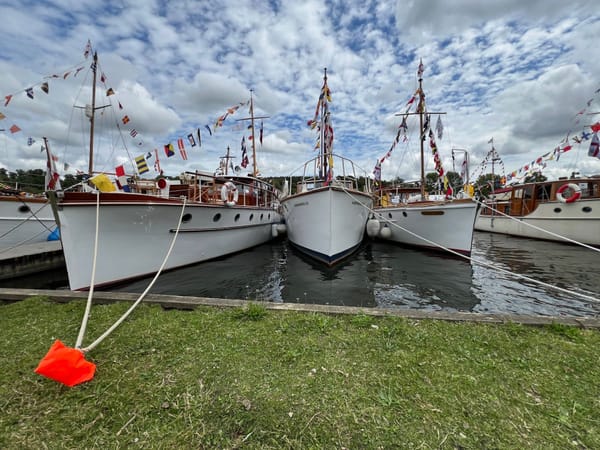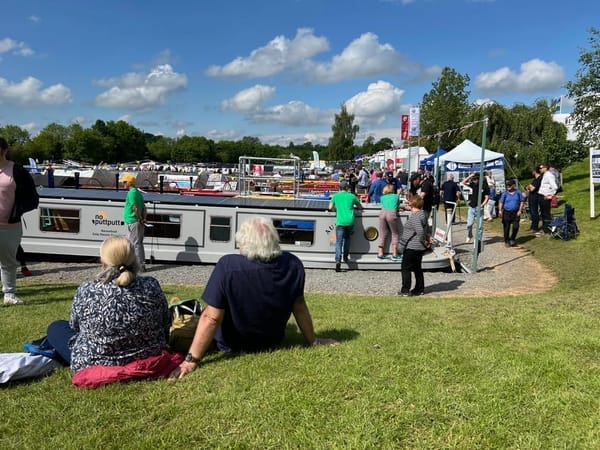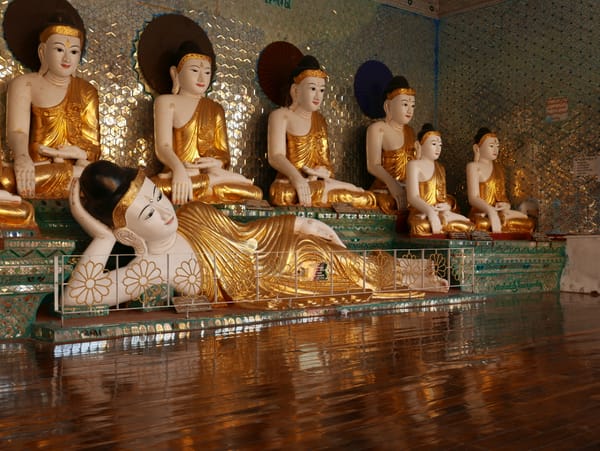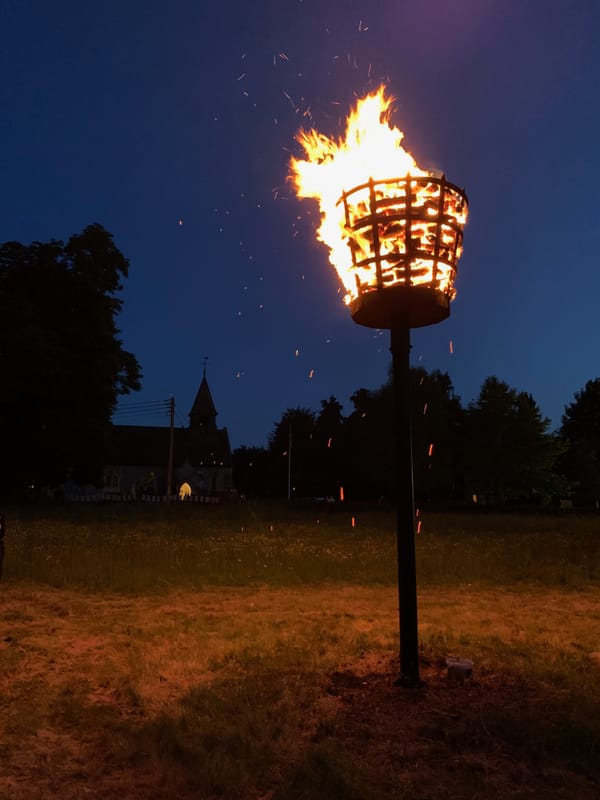Laos — Tour — Ban Xanghai (ບ້ານຊຽງຮາຍ): Liquor & Silk Village, Luang Prabang (ຫລວງພະບາງ/ຫຼວງພະບາງ), Laos
Drink sir?
September 2015
After visiting the Tham Ting (Tam Ting)/Pak Ou (ถ้ำติ่ง) upper and lower caves, I moved on to Ban Xanghai (ບ້ານຊຽງຮາຍ): Liquor & Silk Village, Luang Prabang (ຫລວງພະບາງ/ຫຼວງພະບາງ), Laos. I spent about 40 minutes in the village.
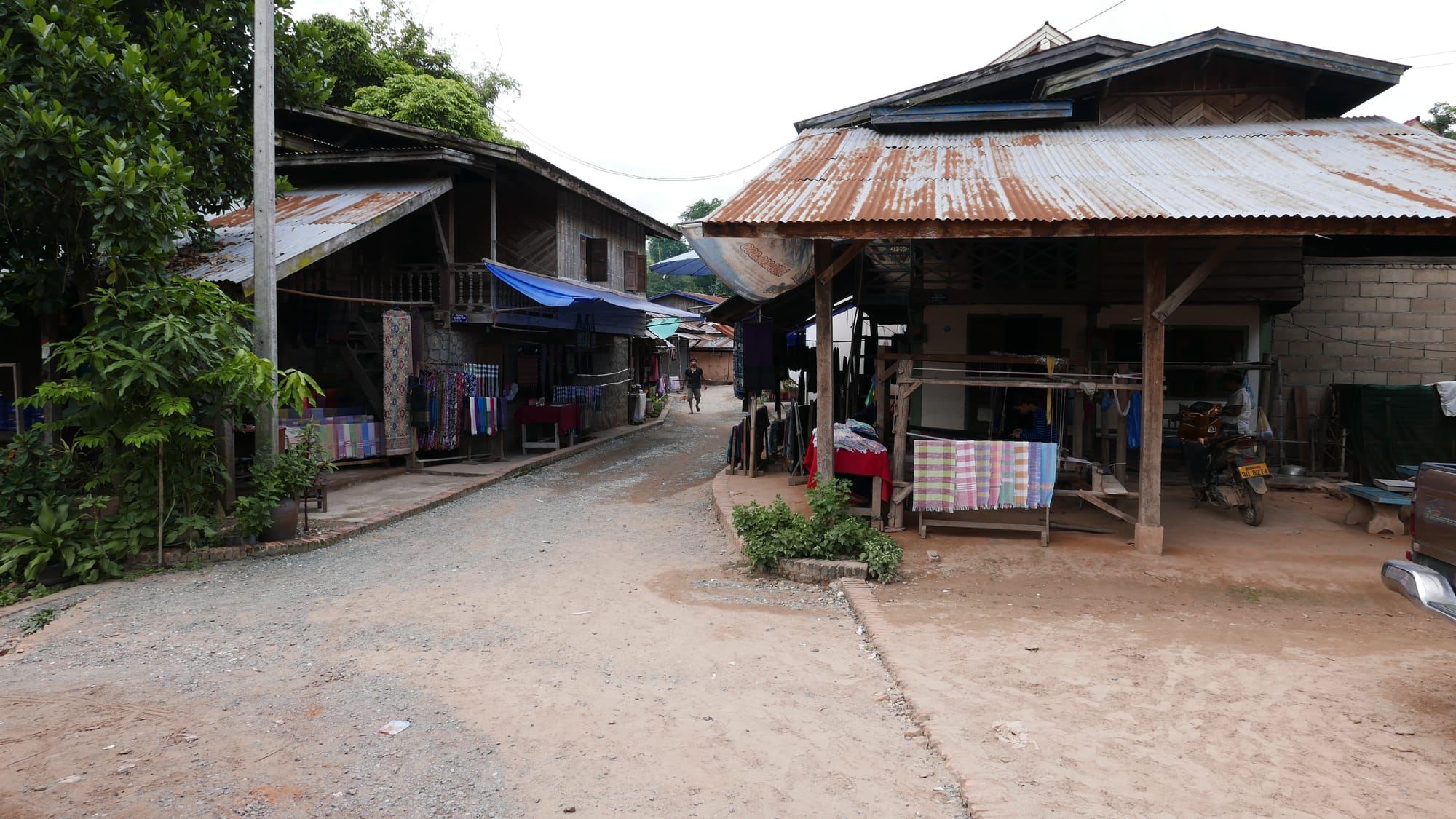

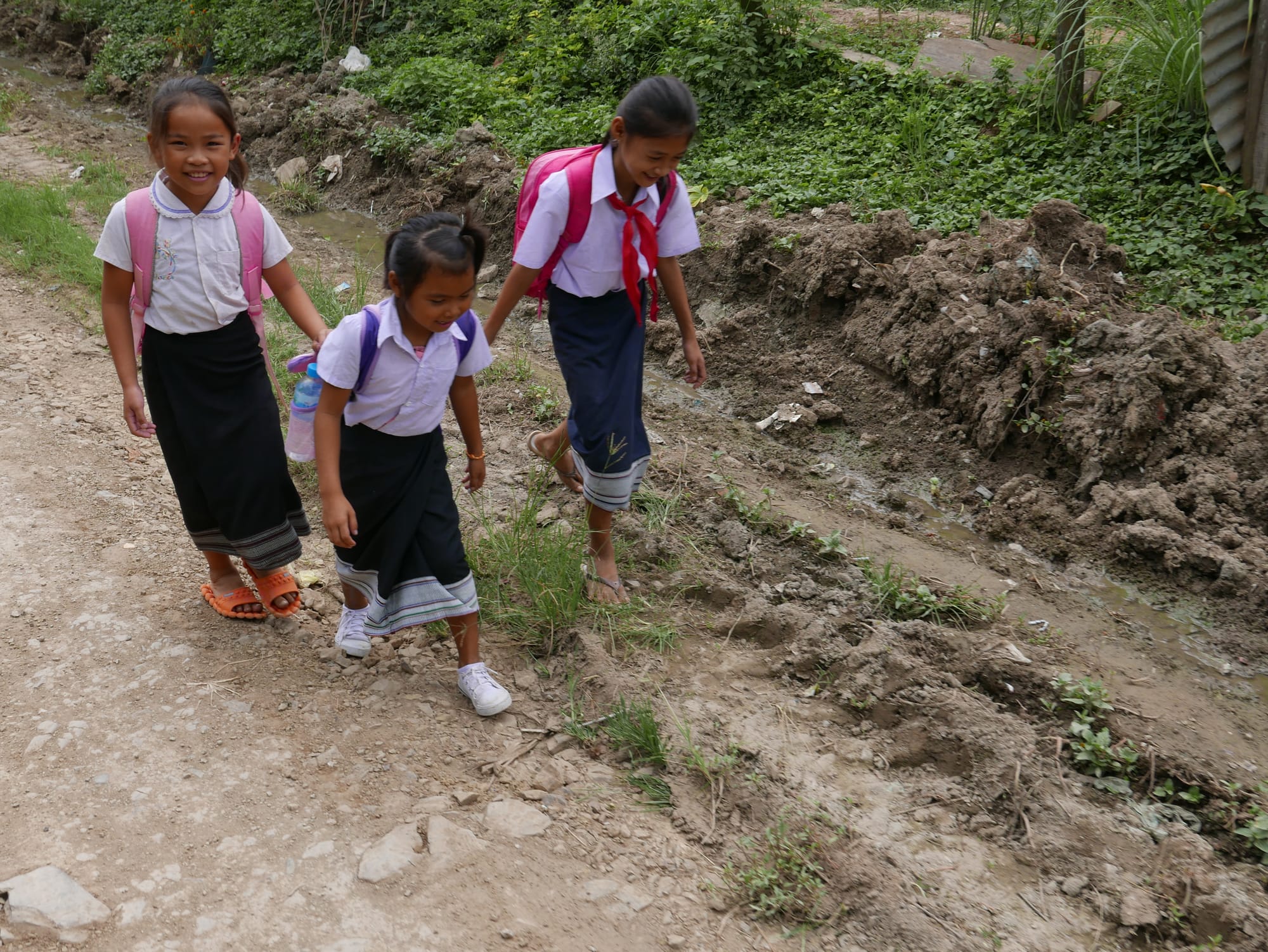
As we pulled into the village, my taxi driver made a made worrying statement — “the whisky is very strong, so only one glass at breakfast and 2 in the evening". I hoped he had skipped his breakfast drink.
My first stop was to look at some local whisky on display. The amount of local wildlife forced into glass bottles was alarming. And I was not convinced that the village produced all the alcohol on sale.
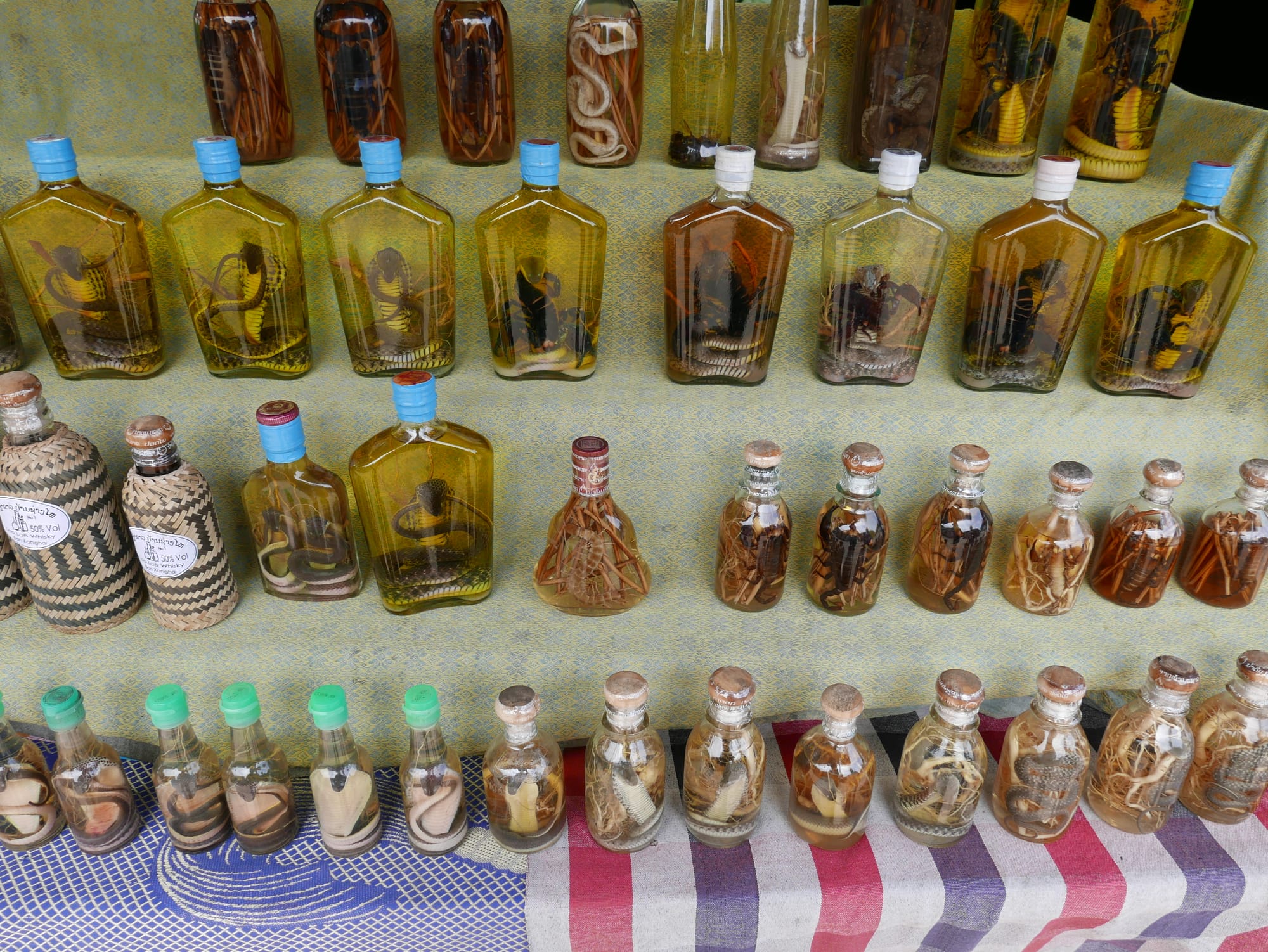
A handy diagram explained the fermentation and distillation process at one of the huts where Lao Whisky was produced.
There were a few things to note in the diagram.
First, the process uses four jars of fermented rice as the input, producing 20 litres of 50% alcohol. Assuming the starting and finishing jars are the same volumes, this suggests that the ‘rice wine’ at the start is 12.5% alcohol. Possible, but it seems high.
Second, I couldn’t work out how the condenser worked. Usually, you have a cold jacket around the output pipe, and this causes the vapour to condense. Yet, there was no cold jacket.
From what I could see in the diagram, the process relied on a header of cold water sitting in an inverted cone. The vapour condensed on the cone and then dripped off the tip to the outlet pipe. An approach I had not seen before.
Finally, the last thing that struck me as odd was the ‘Boil for 2 hours’. Wouldn’t you lose all the alcohol?
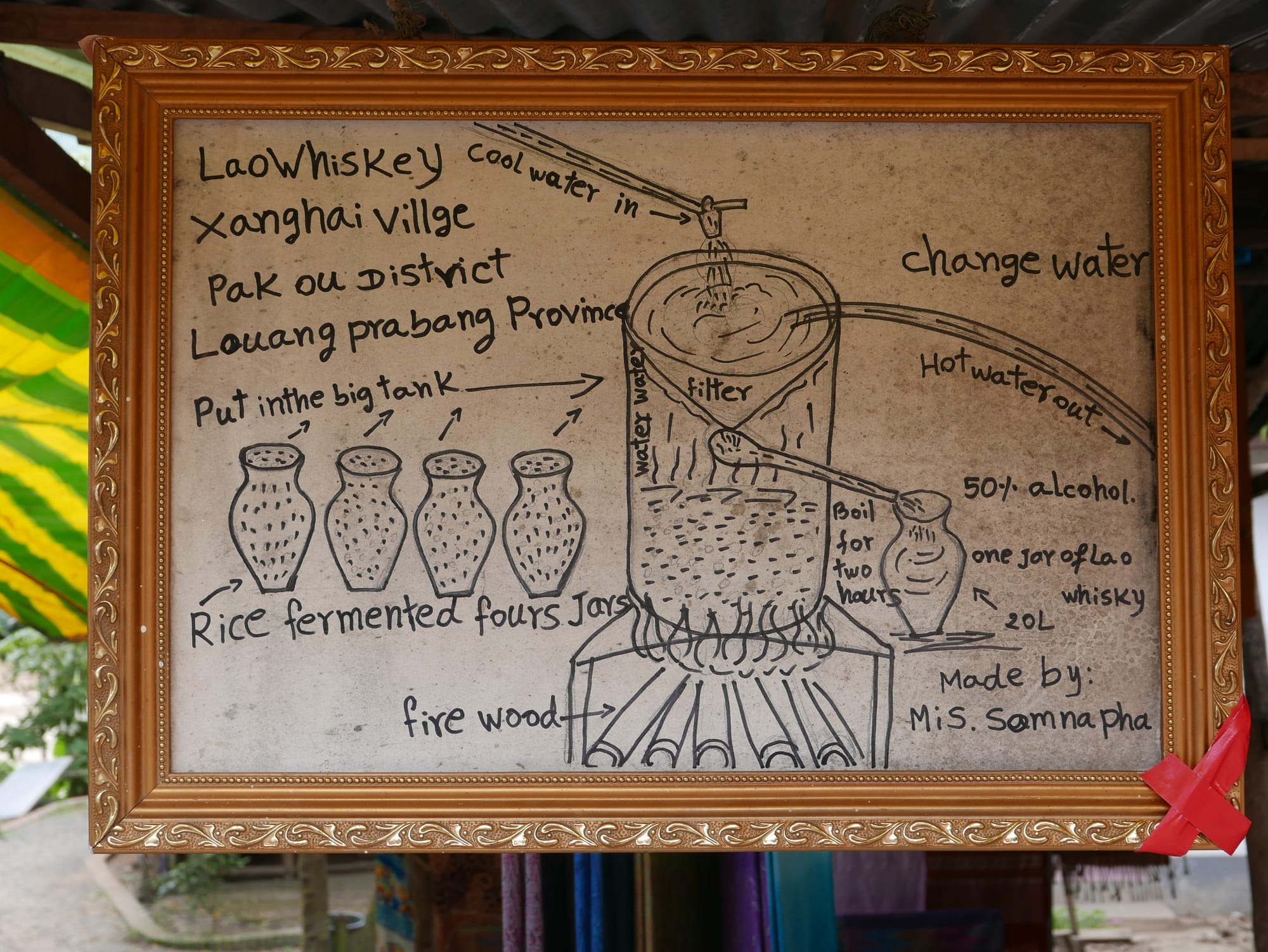
The process started by fermenting rice in clay jars to produce a ‘low-alcohol’ product (by my calculations, 12.5% alcohol, so not too low), which was then distilled.
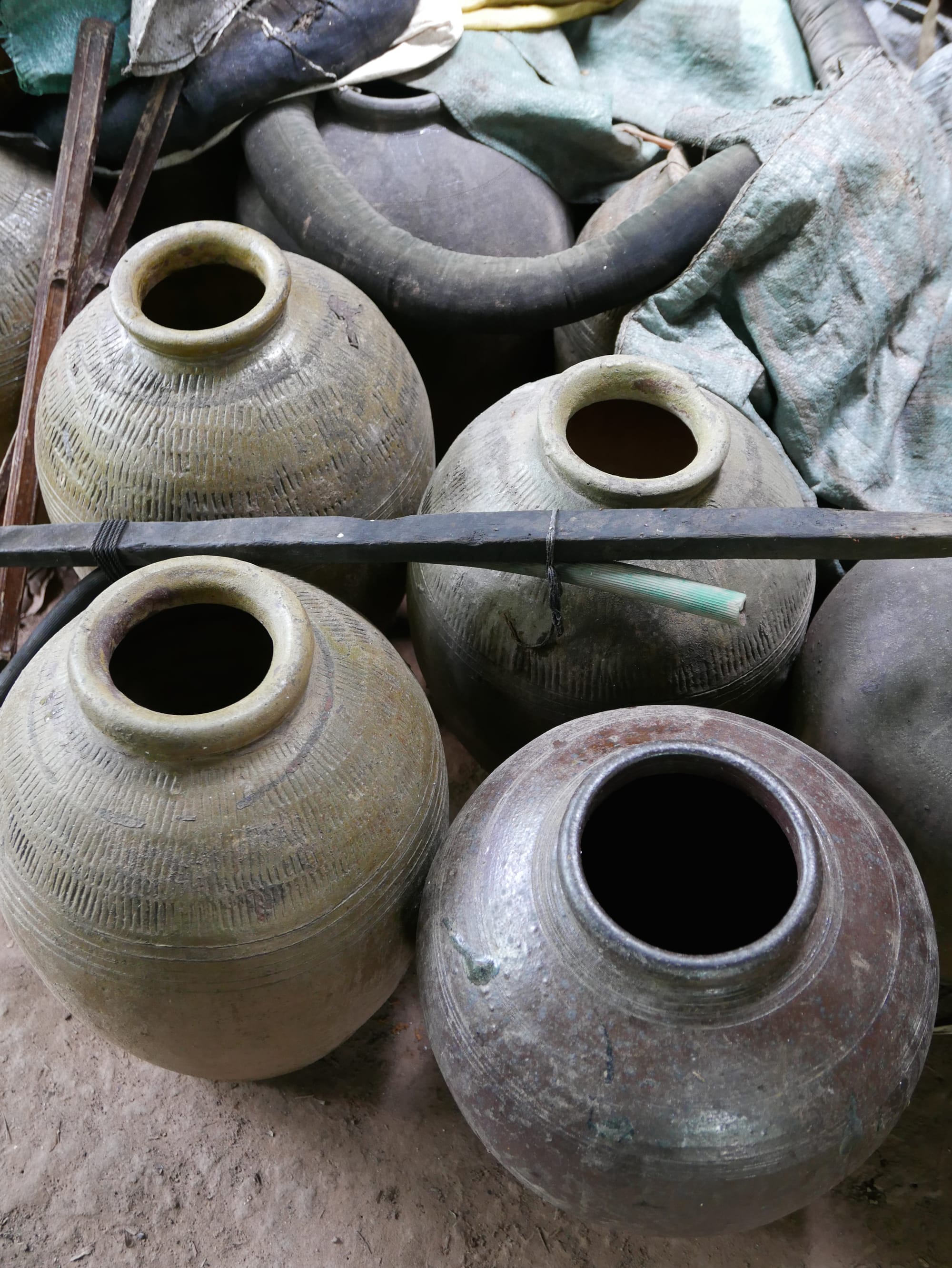
The fermented rice was then passed to a rather odd-looking distillation vessel.
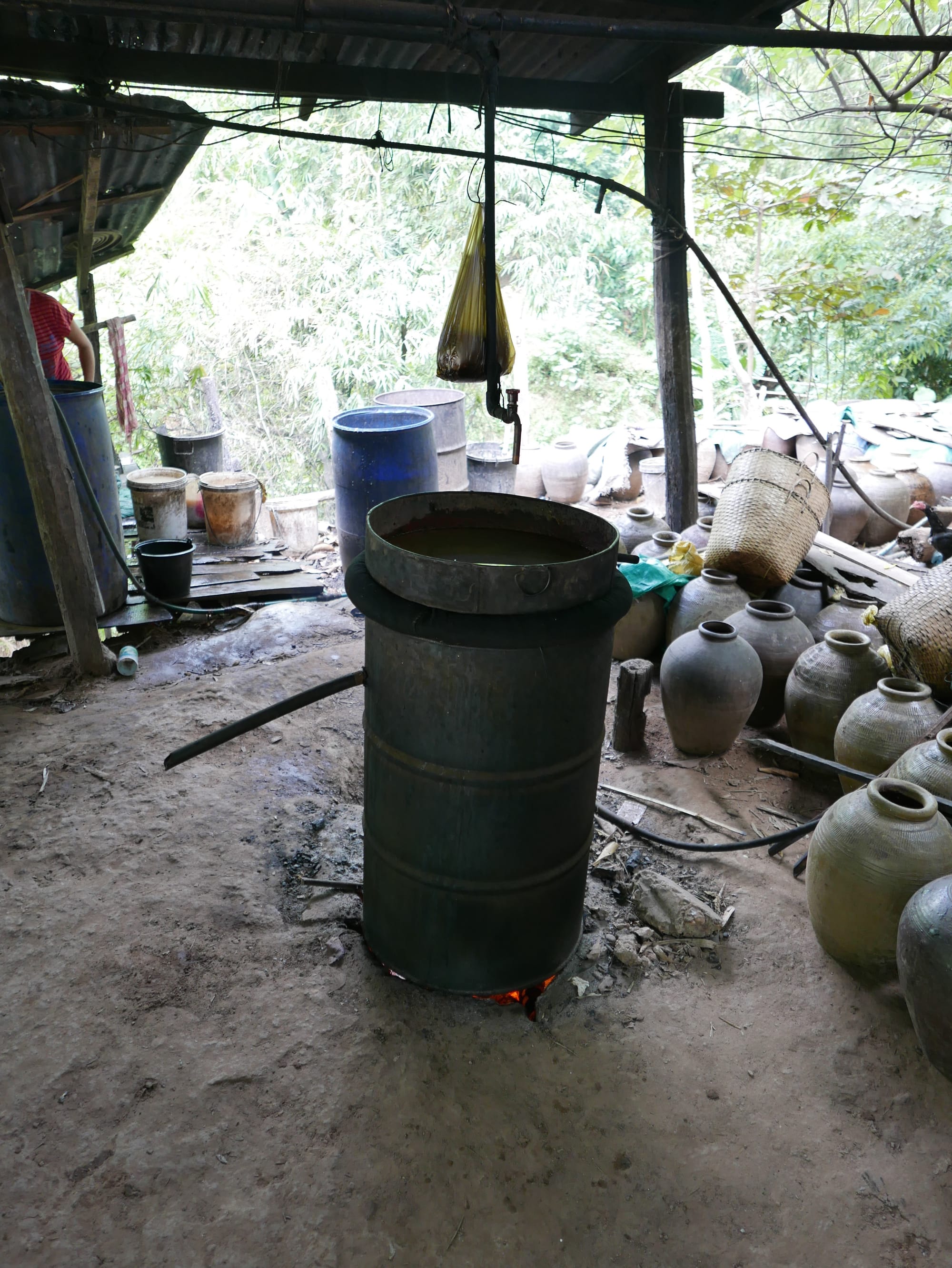
When I looked in the top of the still, I could see the spent rice had been filtered from the liquor produced during fermentation.
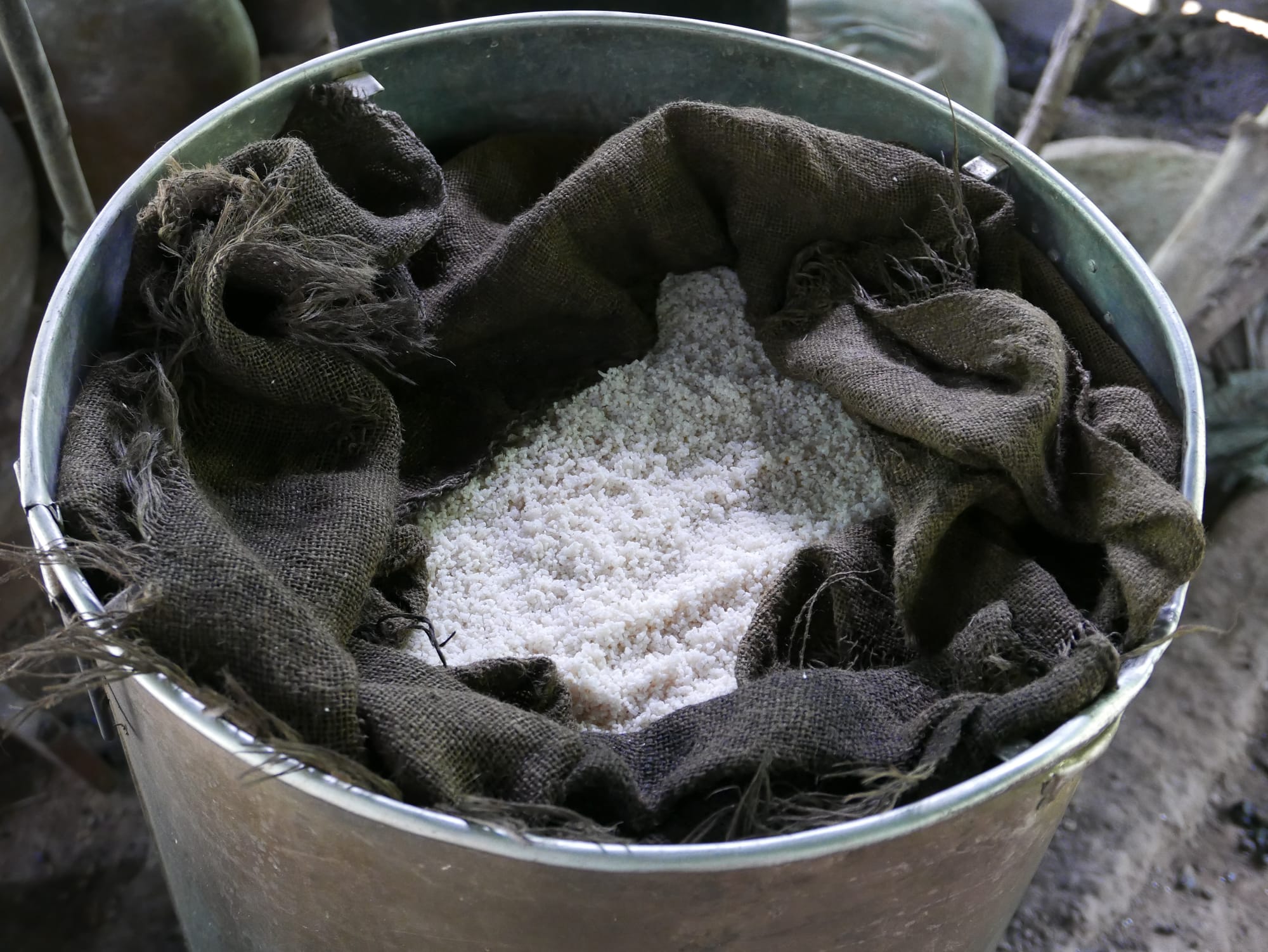
I also saw a still in the village that appeared to be working. There was a fire underneath but no collection vessel. Either the still was being brought to a boil, or this was the 2-hour boil mentioned above.
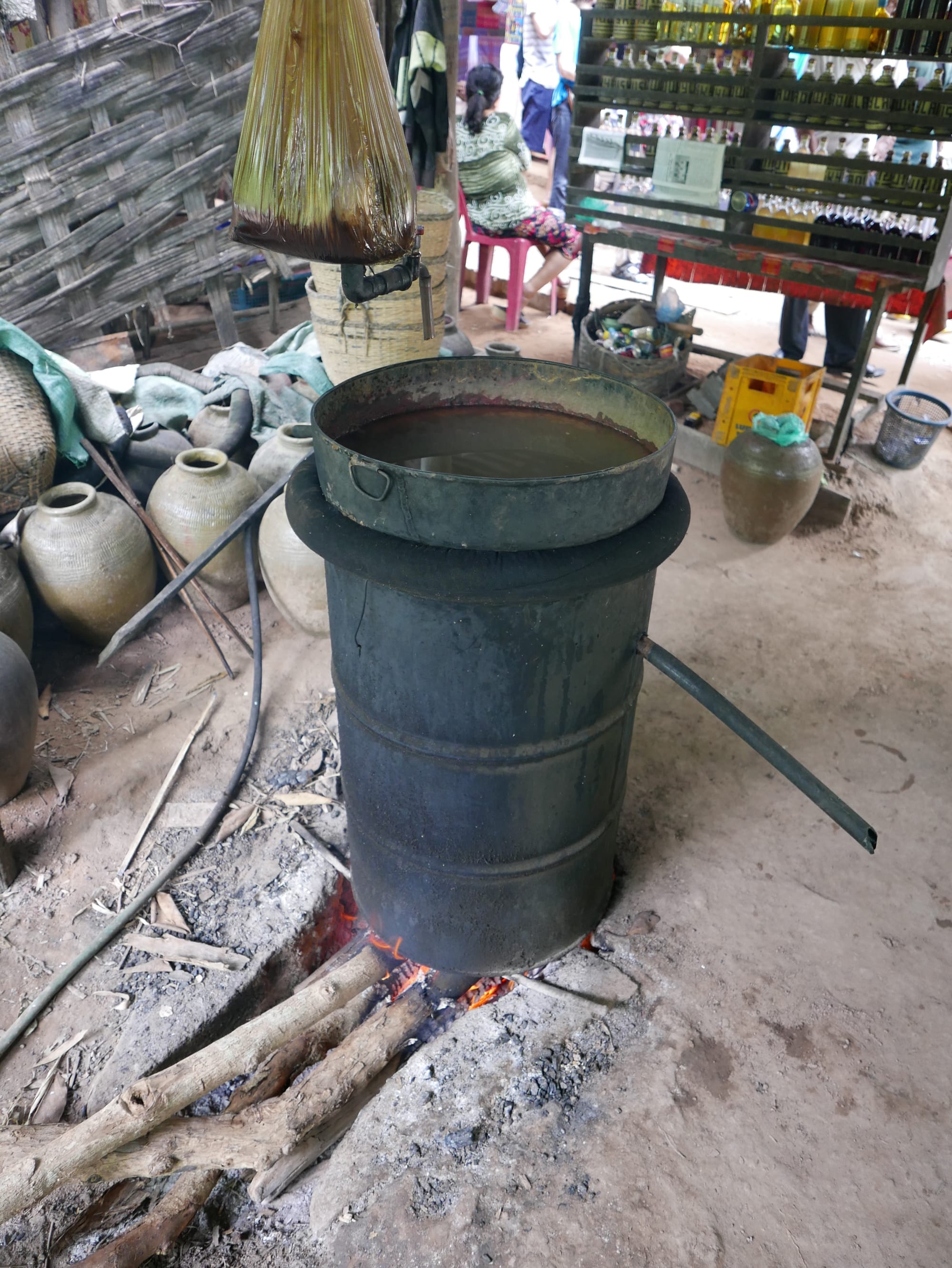
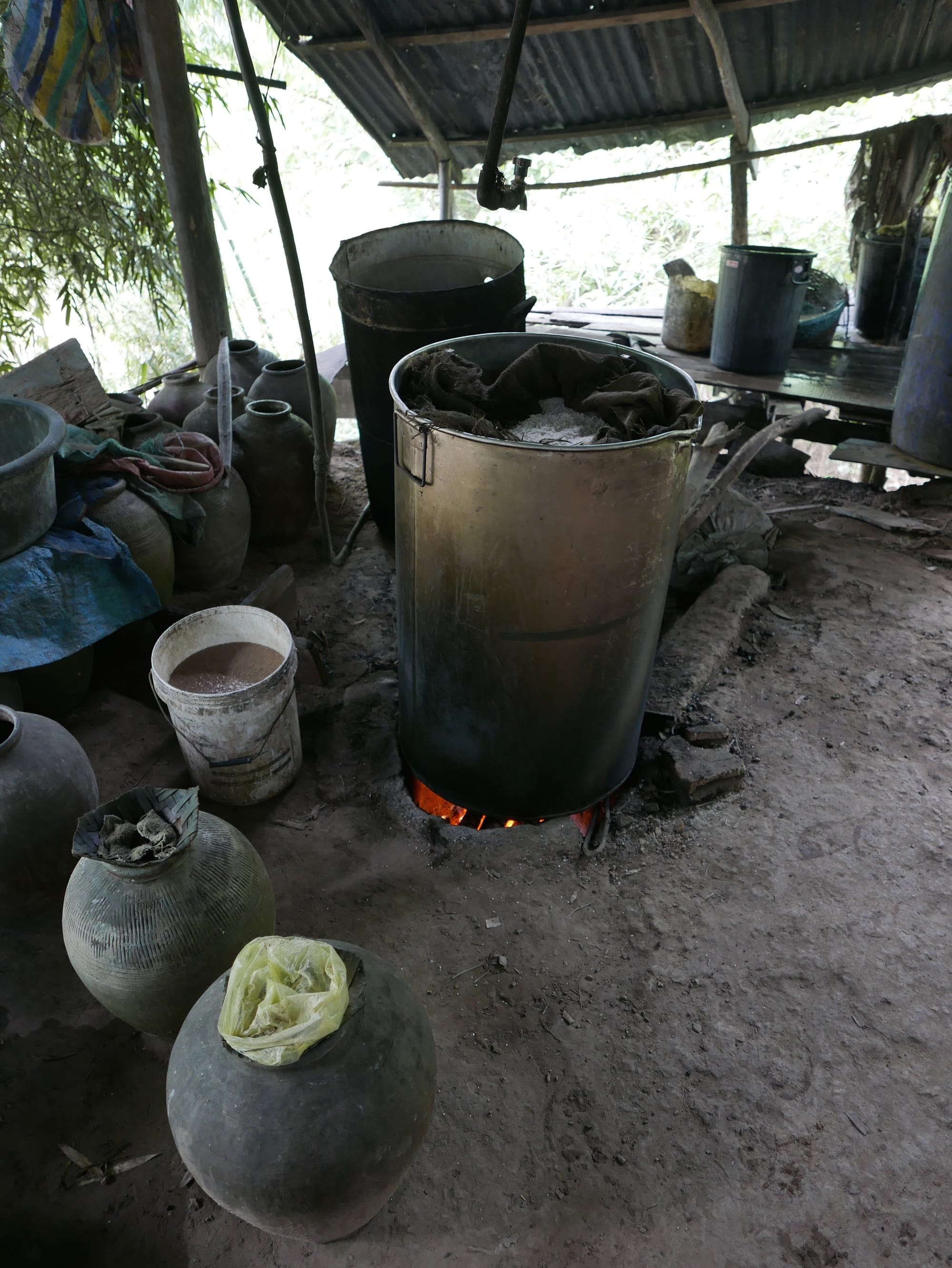
Besides making whisky, the village also produced woven silk; there were several looms and places to dye silk around the village.
The colours of the silks were beautiful.
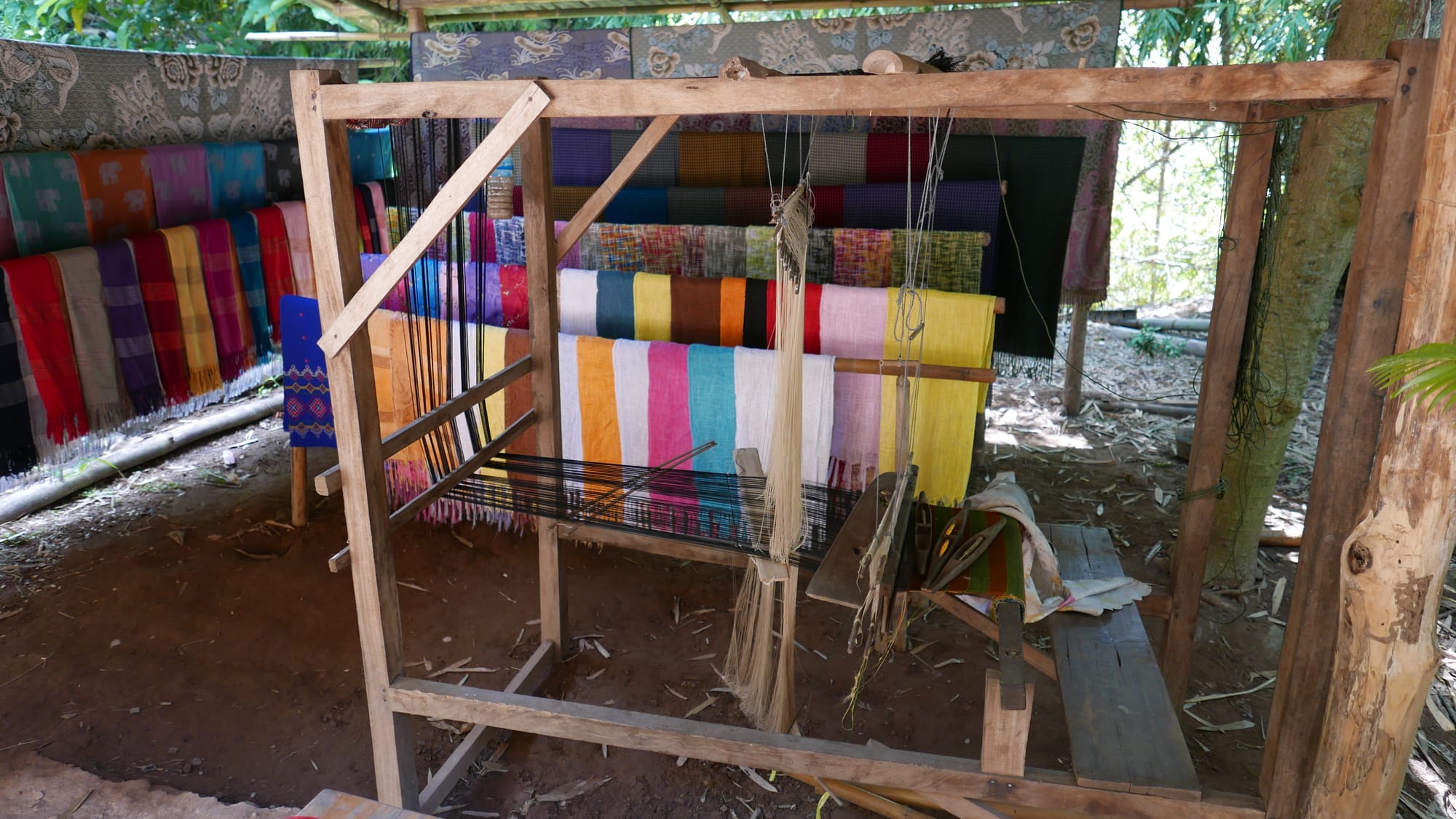
And the final product was stunning. The level of craftsmanship was incredible.
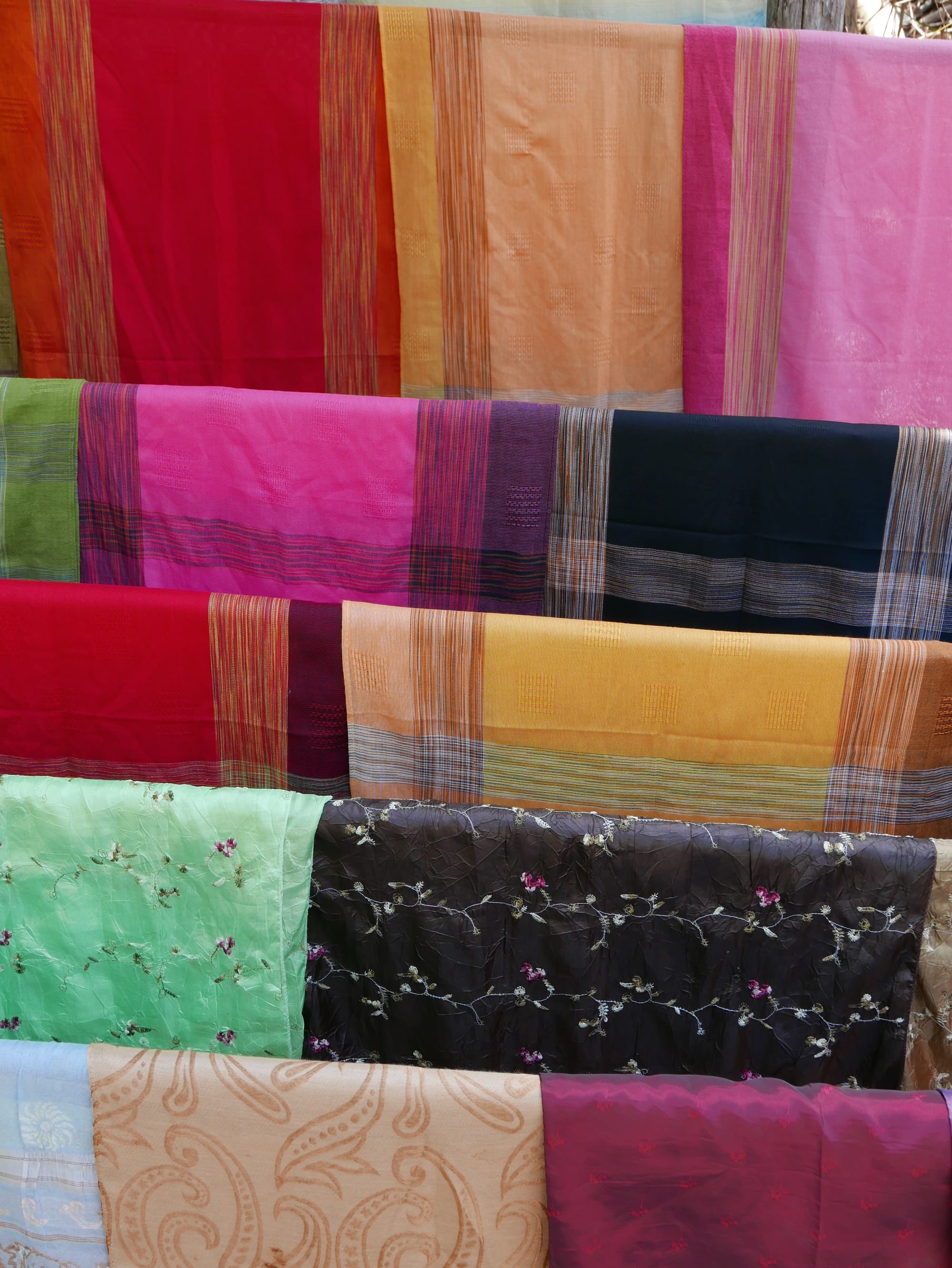
I loved all the colours.
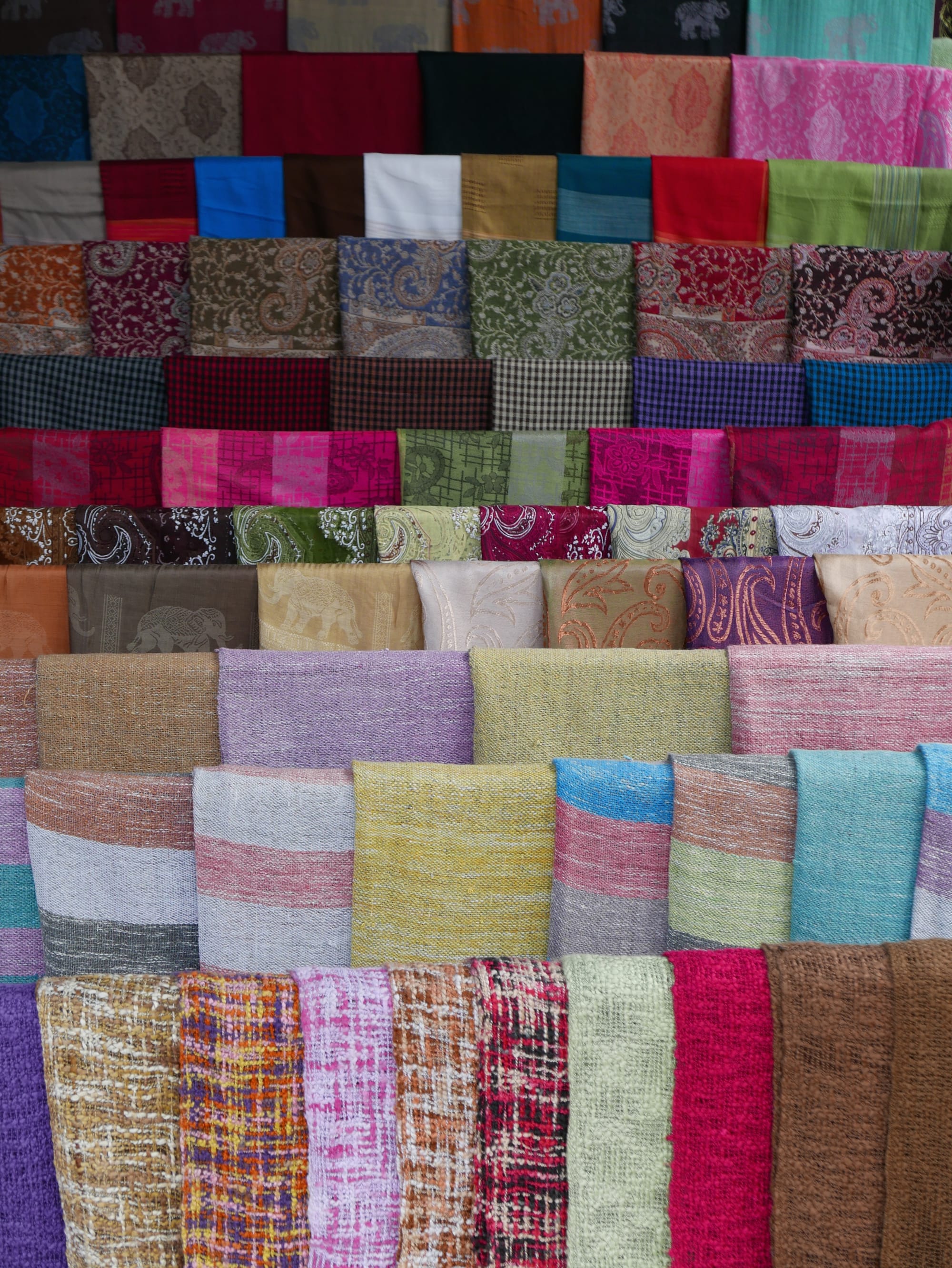
I watched a weaver at work and was surprised at their speed.
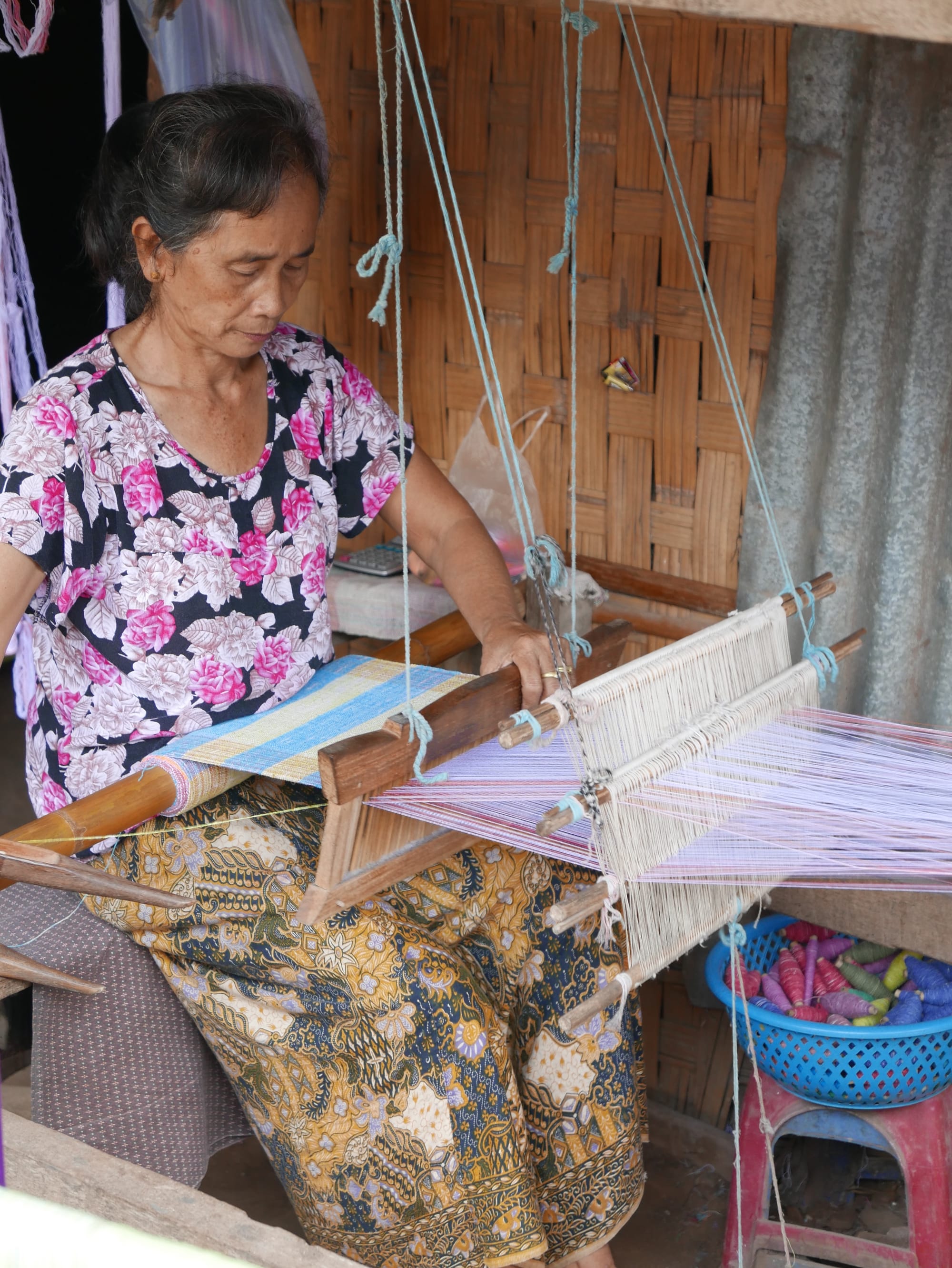
In the village, they seemed to be carrying out the whole process, from the material dying to the final cloth production. It was fascinating to see.
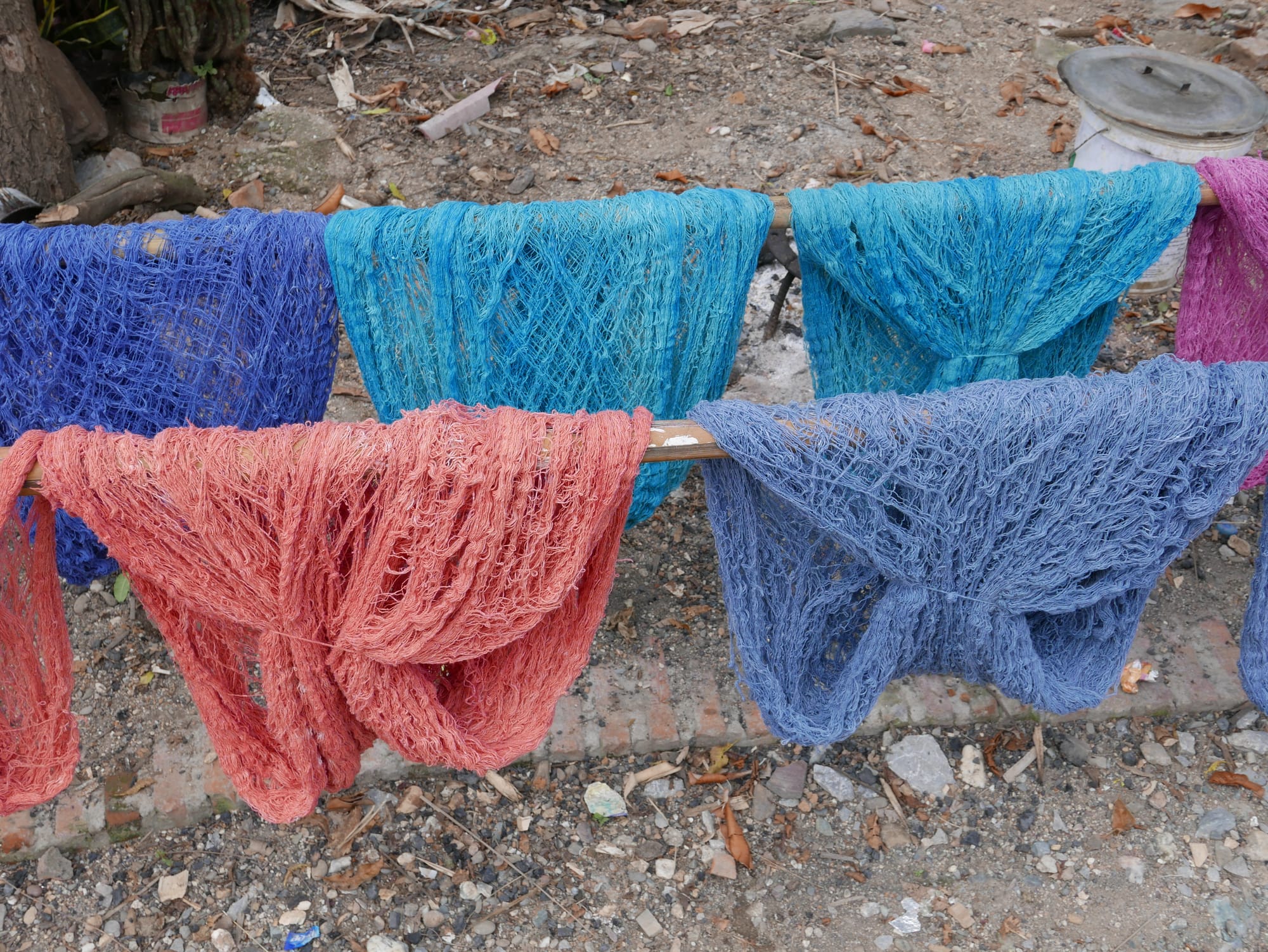
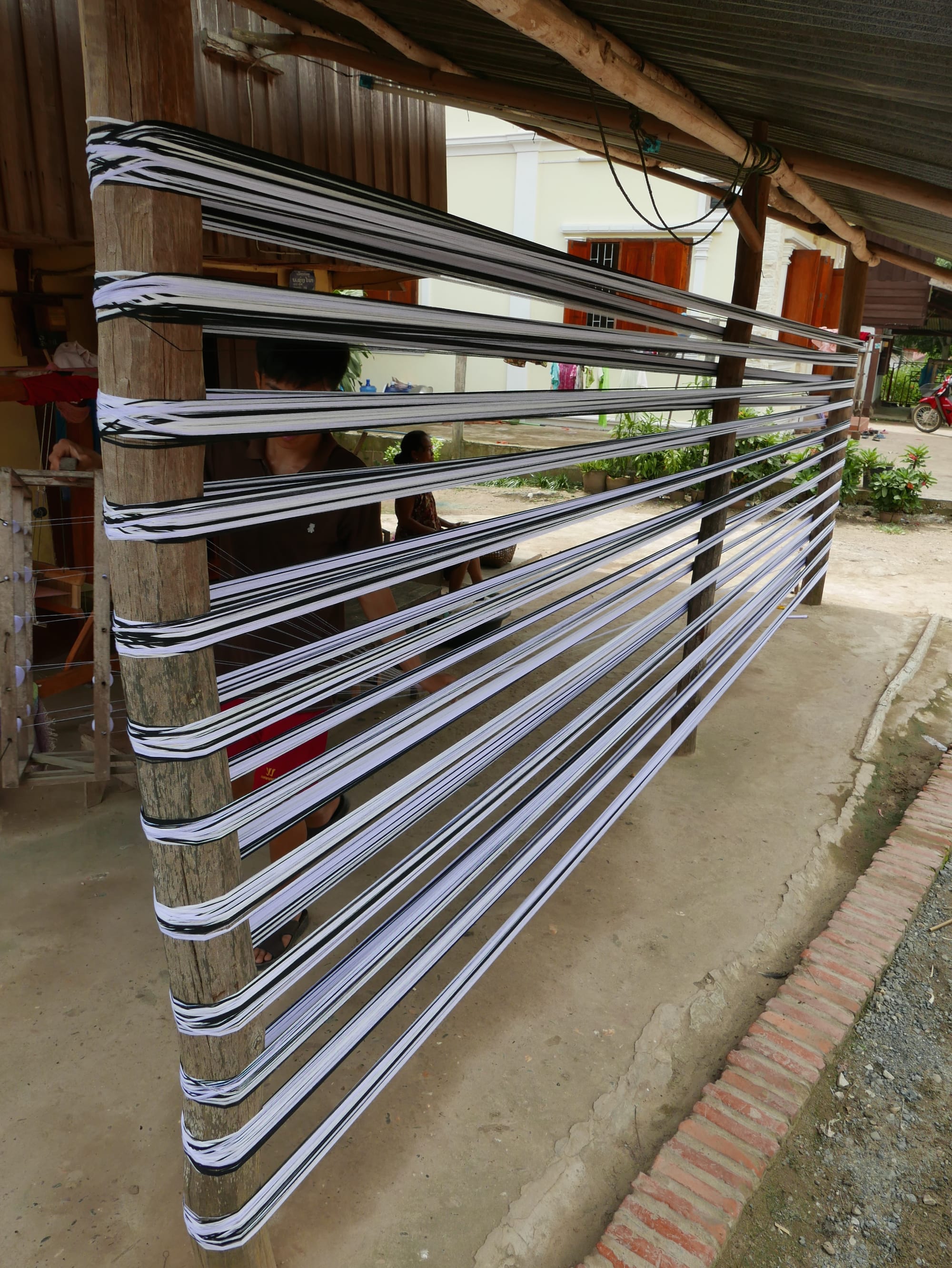
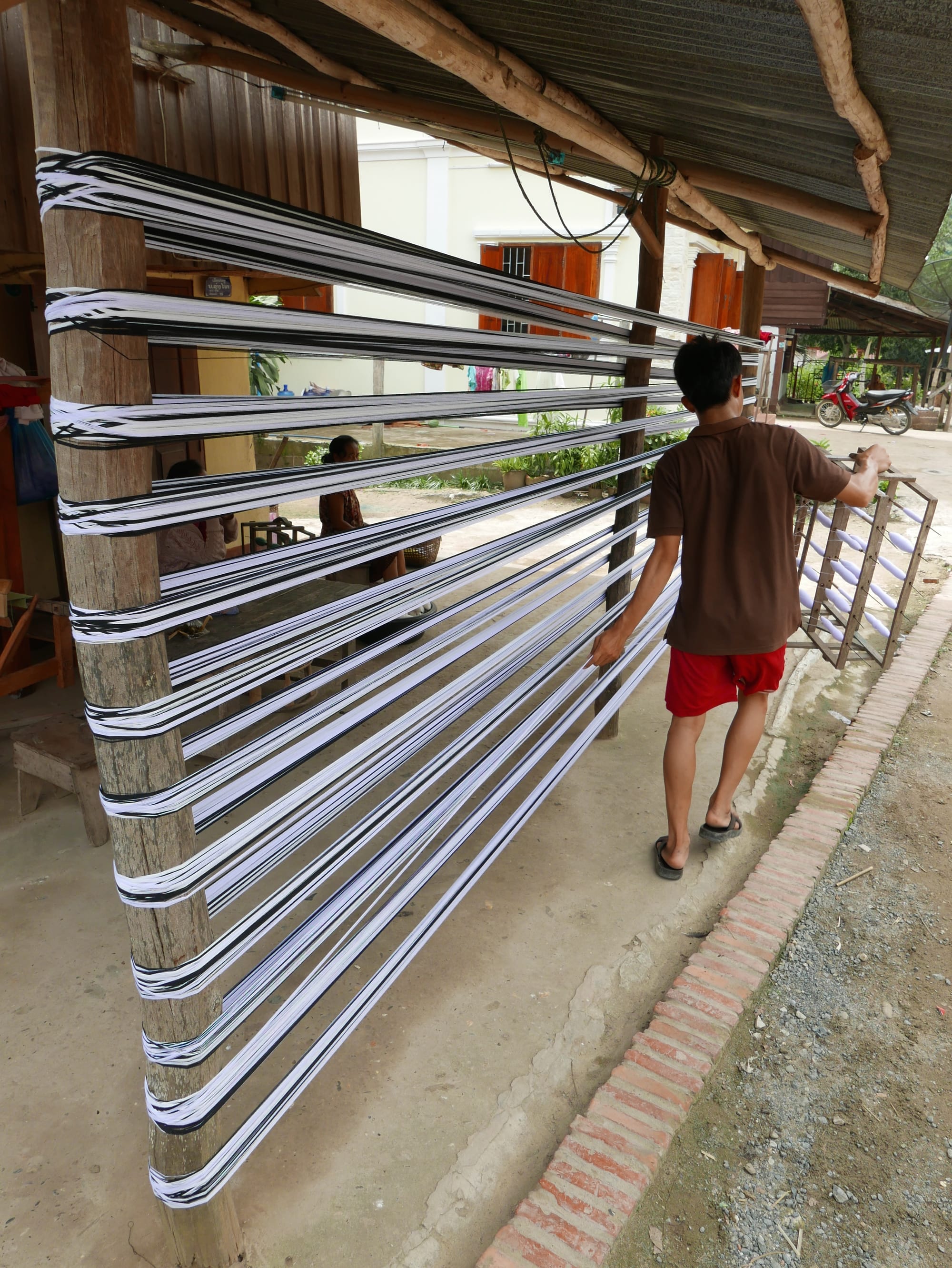
And the looms looked so old and yet were still in use.
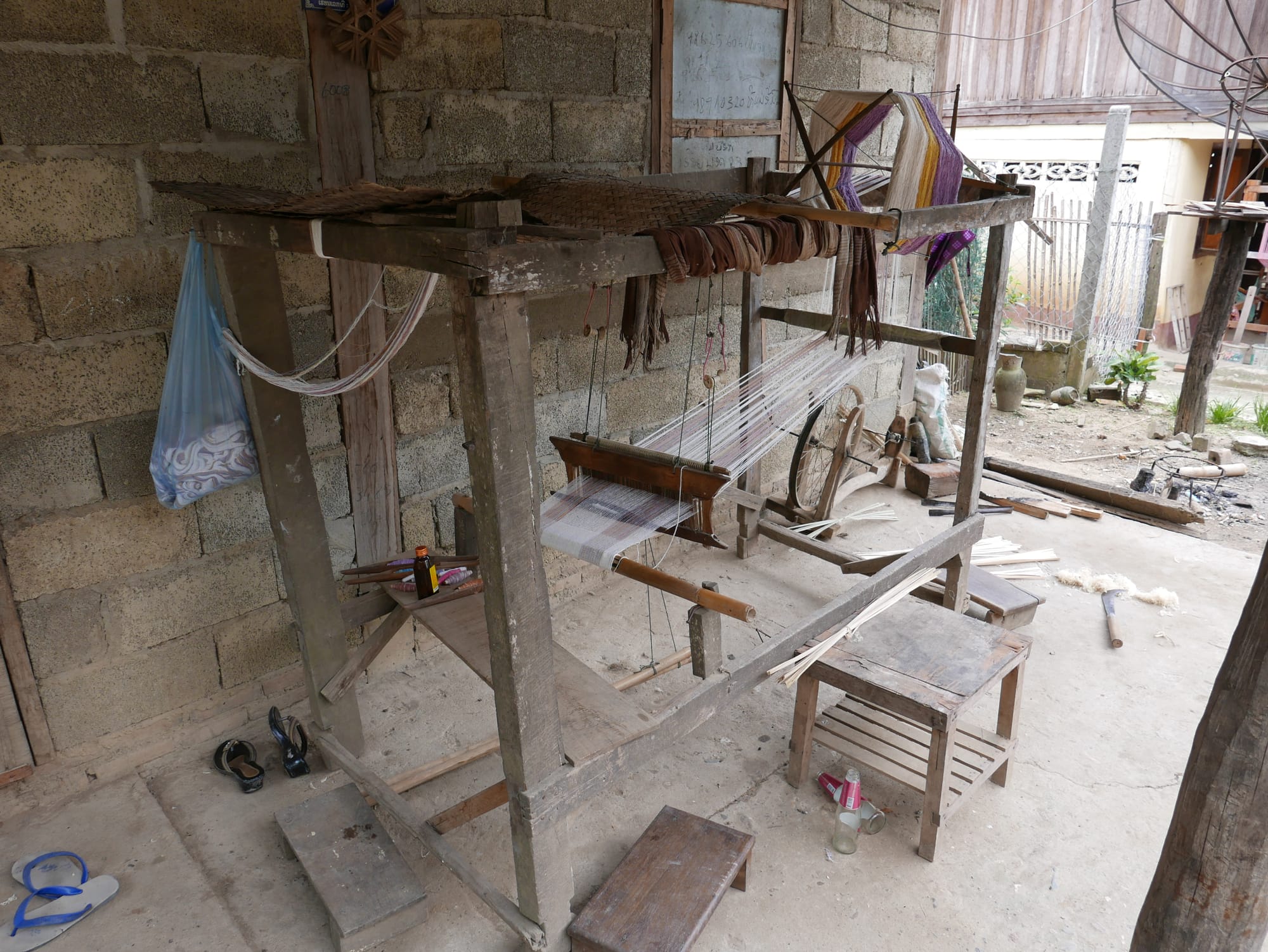
Before leaving the village, I had a brief look at their temple.
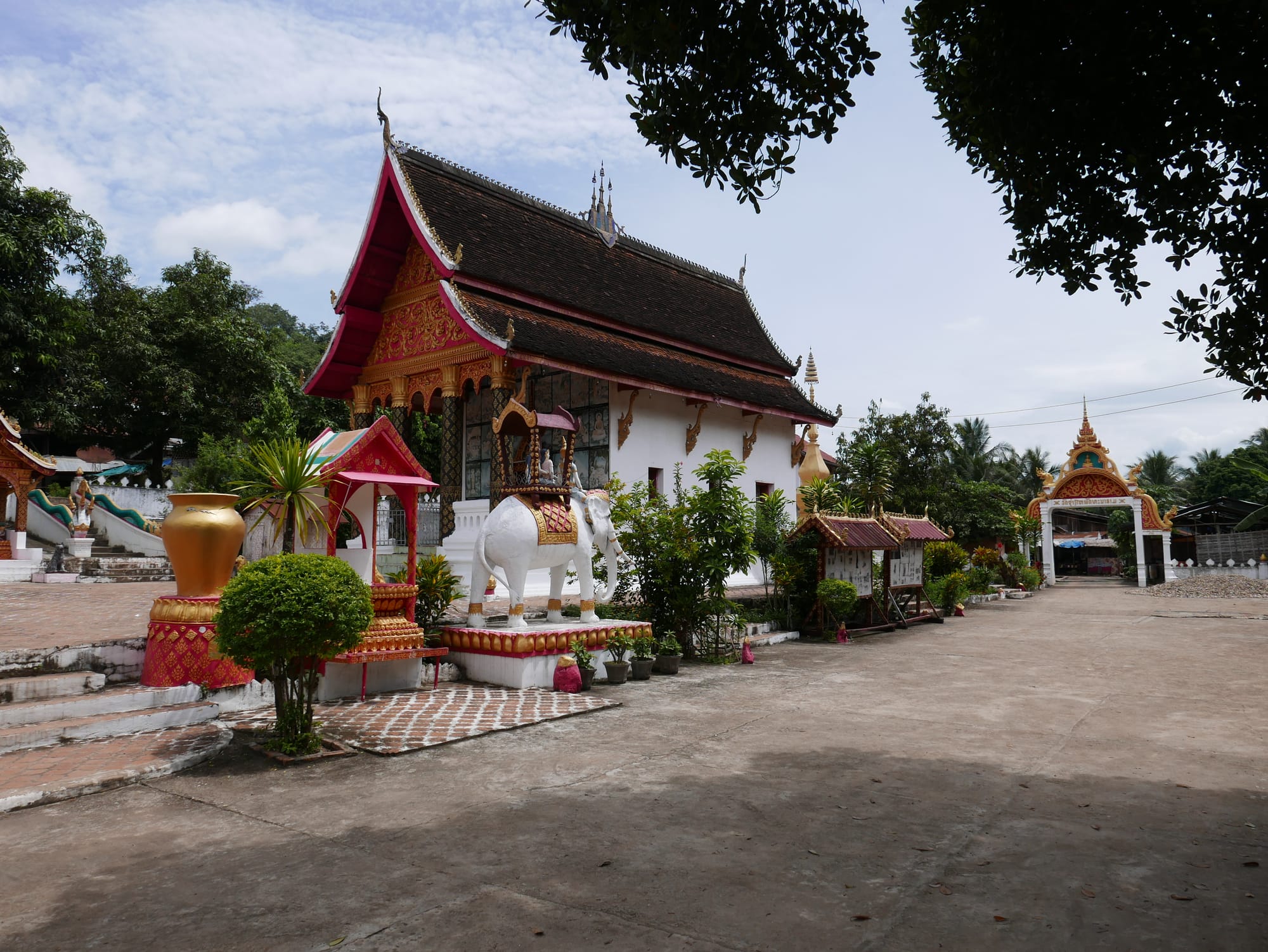
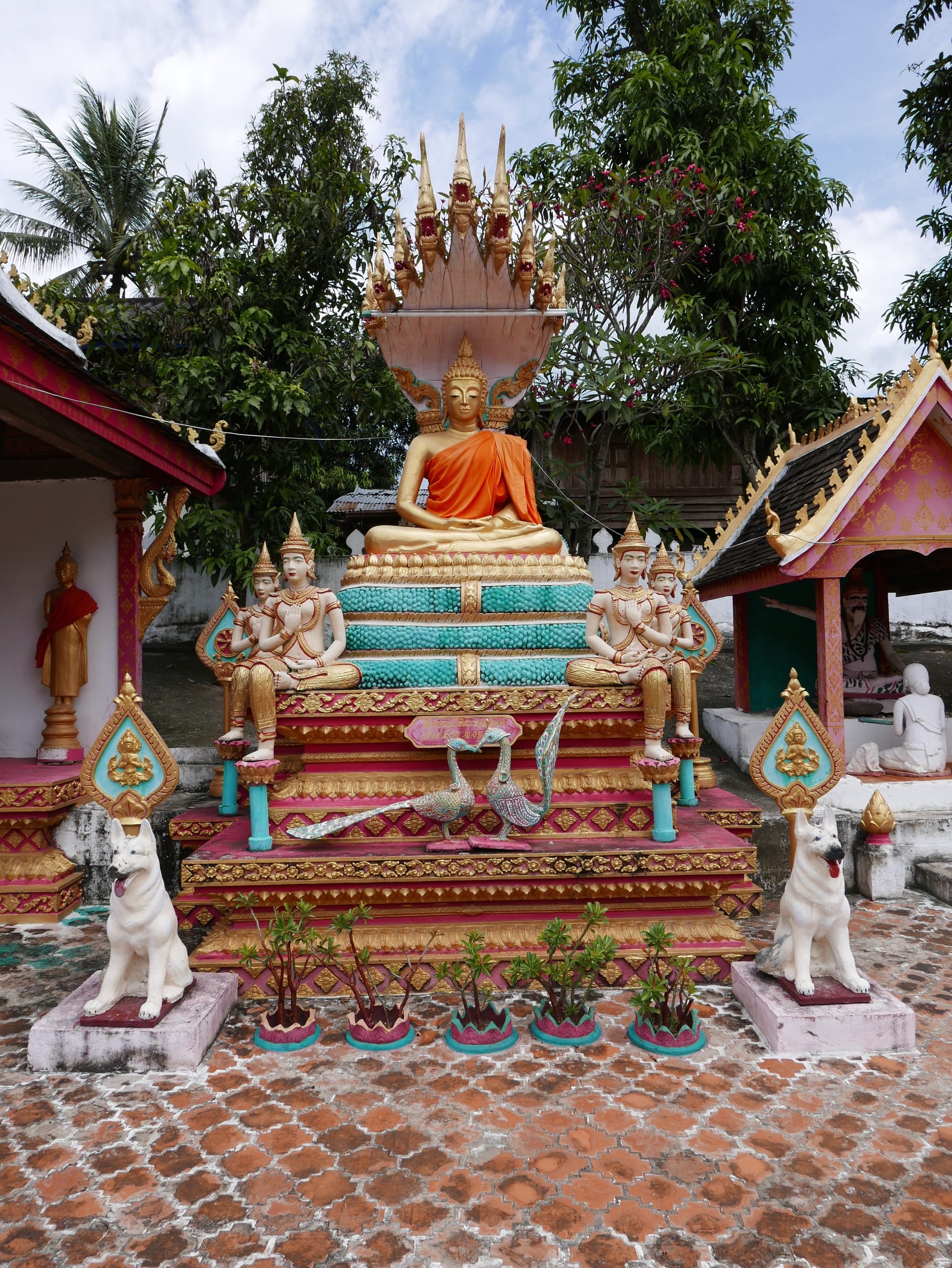
It was interesting looking around the village. I found the whisky production (I have a background in chemistry) fascinating. Even after touring many distilleries in Scotland, I had never seen a set-up like the ones in Ban Xanghai (ບ້ານຊຽງຮາຍ).
I thought the silks produced in the village were beautiful. The colours were spectacular, and the craftsmanship was exceptional.
From village Ban Xanghai (ບ້ານຊຽງຮາຍ) we drove back to Luang Prabang (ຫລວງພະບາງ/ຫຼວງພະບາງ) before heading on to the Kuang Si Waterfalls.
Foursquare: Ban Xanghai (ບ້ານຊຽງຮາຍ): Liquor & Silk Village
